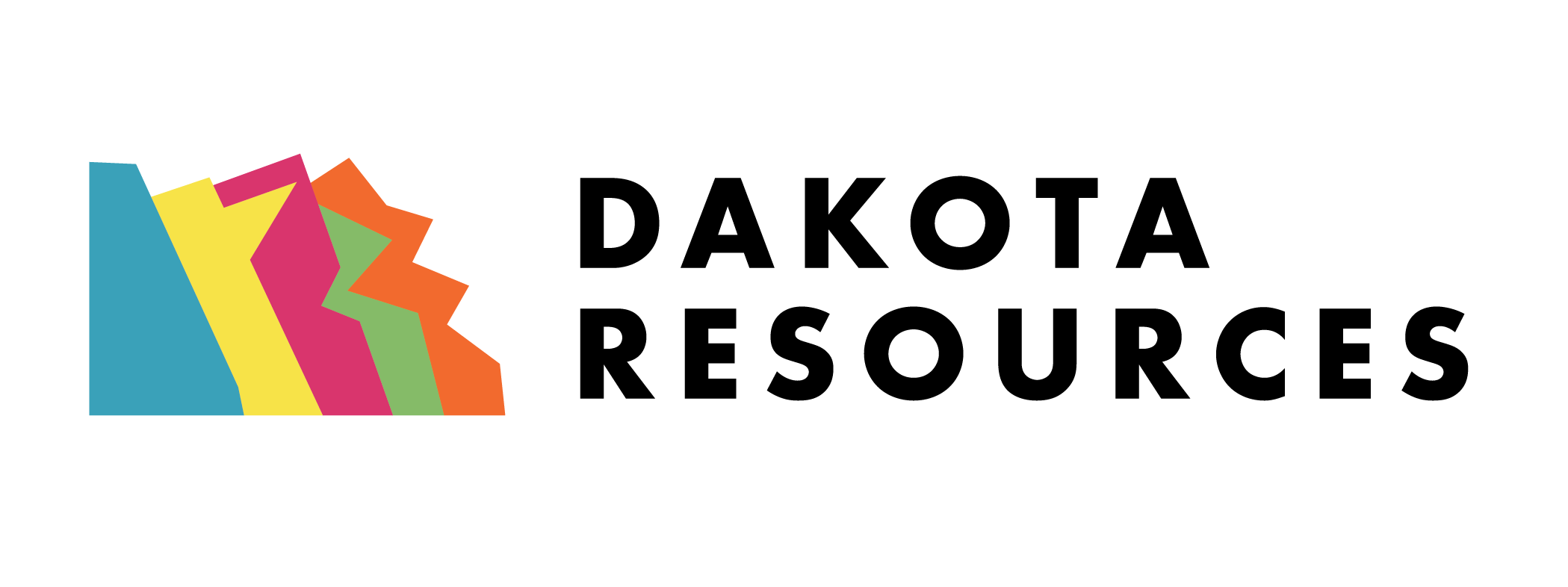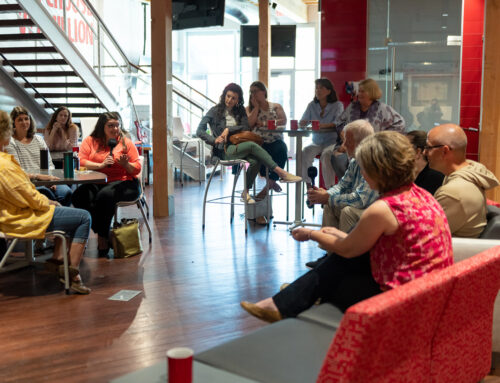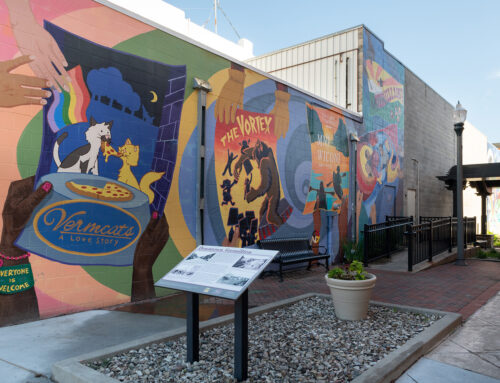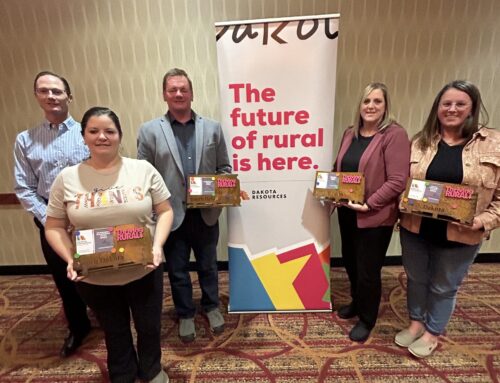Survey Says Series: Collaboration, Professional Development Crucial For Rural Communities to Thrive
Community and economic development work is often complex and can mean many different things. For this reason, Dakota Resources recently conducted a survey to help foster understanding of what community and economic development organizations look like and the type of work they are doing in their community.
In August 2021, Dakota Resources conducted the Climate of Community and Economic Development survey, and participants primarily included community and economic development organizations from across the state of South Dakota. Because the results of this survey have shed important light on opportunities that can positively impact the work that rural shapers do around South Dakota and beyond, we’re excited to share some highlights of the main findings from the survey.
In the last issue of the newsletter, we analyzed survey findings in two financial-related areas: 1) organizational or funding model design, and 2) compensation. Click here to catch up on this series.
In this issue, we’re excited to share additional insights regarding active priorities and professional development.
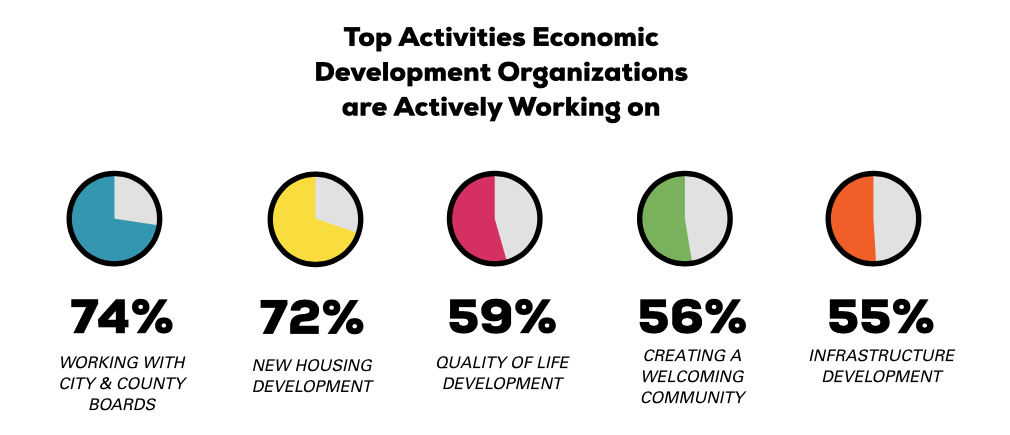
Finding 1: Importance of Turning to Local Organizations to Support Economic Development Priorities
Survey Says
Working with city and county boards was ranked as a top priority for nearly three-quarters of survey respondents across the state. Comparatively, development of new housing initiatives (72%), quality of life development (59%), creating a welcoming community (56%), and infrastructure development (55%) were other priorities for the communities we surveyed.
Put another way, survey respondents were asked to place a weight of importance upon activities like those listed above. On a scale of 1.0 to 4.0, with 4.0 indicating the highest priority, respondents reported that “working with city and county boards” ranked at a 3.19 out of 4.0. The other activities ranked in the top five included small business development (3.11), existing business development (3.10), new housing development (3.06), and quality of life development (3.00).
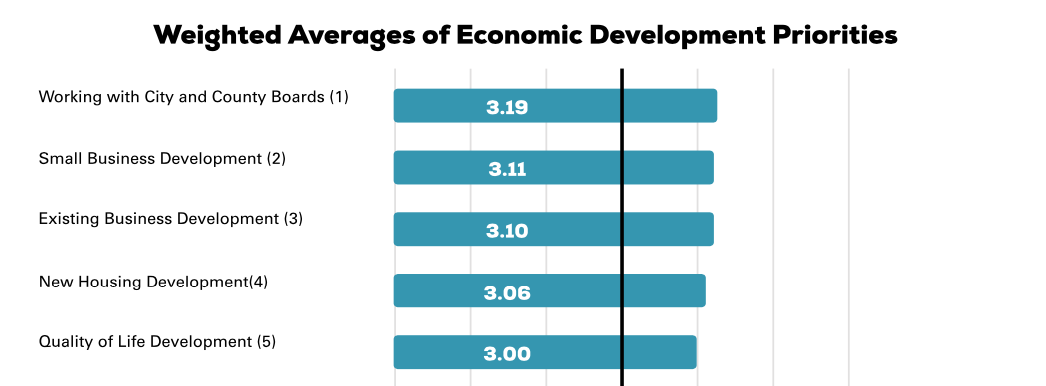
What This Means
First, and most clearly, these survey results indicate that while economic development work can encompass many things, the fruits of such work are best realized when organizations throughout the city and county can collaboratively work together to find and invest in solutions that meaningfully address the opportunities for growth.
In order to make this happen, economic development organizations need a tool that can allow their work to be organized and prioritized effectively while also enabling such work to be shared with stakeholders in the community. And while some communities may already have a reliable mechanism or means of communication at play to do just that, Dakota Resources’ Learning Network has adapted an effective model to improve such collaboration. The Community and Economic Development Blueprint, a model that was adapted from Elevate Rapid City’s Tom Johnson, provides a framework of priorities within which community leaders can work. While all building blocks within the Blueprint are important to cultivating a thriving community, organizations can assess the areas in which they are strong and also see where they can collaborate with other organizations within the county/community to address other areas.
“We think it’s important for community leaders to use a model that identifies the “building blocks” for creating thriving communities. They need to answer what building blocks need attention in their community and which of them meet their organization’s mission,” Mike Knutson, Community Coaching and Network Orchestrator said. “ At Dakota Resources, we see our role as helping to support the building blocks of the Blueprint – those that provide a foundation for an economic development organization’s overall strategy – and we are grateful for other organizations who serve in areas that we do not. It truly takes a collaborative effort to build strong communities.”

For Tammy Krein, Executive Director of Deuel Area Development in South Dakota, the Community and Economic Development Blueprint provides an effective way for the organization to explain what economic development really consists of, as well as the strong basis that’s required in order to facilitate community growth.
“What probably gets me the most excited about the Blueprint is that when I think about trying to accomplish all 13 of these blocks as one organization, it feels overwhelming,” Krein said. “But one thing I learned from Dakota Resources is that it’s okay to delegate or share responsibility, so when you look at these blocks that way, this can easily be accomplished with the right people helping.”
Finding 2: Desired Opportunities for Professional Development Align with Dakota Resources’ Learning Network Benefits
Survey Says
When asked about the topics or issues that they were interested in learning about, survey respondents selected five priorities, which are listed below:
-
69% said they are interested in learning about developing housing solutions for their community
-
59% said they are interested in learning about engaging community members
-
54% said they are interested in learning about marketing & communications
-
52% said they are interested in learning about industrial / commercial development
-
48% said they are interested in learning about building an entrepreneurial support system in their community
What This Means
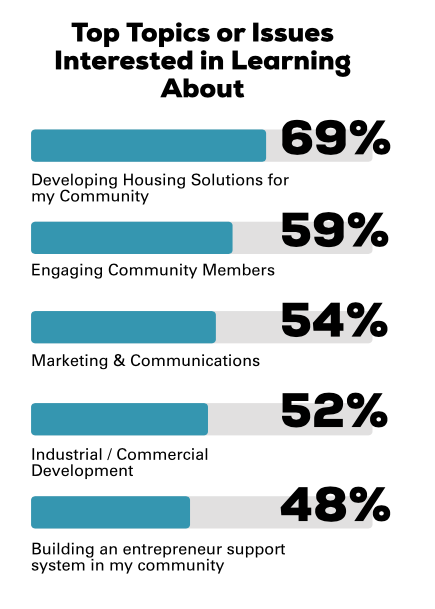
In our first article of the Survey Says series, we shared that economic development organizations who completed the survey stated that an average of 1.4 personnel is on staff at a given community or economic development organization. Given this average, the learning opportunities available to, in many cases, a single staff member at the helm of an economic development organization, need to be robust in scope and accessible in delivery.
Dakota Resources’ mission is about connecting capacity and capital to empower rural communities, and our programs are aimed to do that work. In analyzing both this constraint in staffing and the survey respondents’ priorities listed above, we at Dakota Resources were excited to see alignment between what practitioners desire to learn and the current offerings within the Learning Network. For instance, our Learning Network Gatherings focus on four initiatives, namely 1) Leading Your Organization, 2) Housing, 3) Community Engagement, and 4) Entrepreneurial Support Systems. According to the survey responses, these Gatherings offer learning opportunities that are needed and desired by the people and the communities that we serve.
“Here at Dakota Resources, we’re aiming every day to apply our mission and use it to inform everything we do,” said Joe Bartmann, Dakota Resources President. “It’s important to us that we keep learning how to meet the needs of who we serve, and that core mission of being a connecting force for stronger rural communities is what drives all of our programming.”
Dakota Resources strives to present opportunities for professional development that focus on the aspects of this important rural-shaping work that our community leaders truly need, and it’s validating for us to see such alignment in our outreach.
Take Action: Ready to dive into the Climate of Community and Economic Development survey results? If so, we encourage you to download your copy of the report here.
